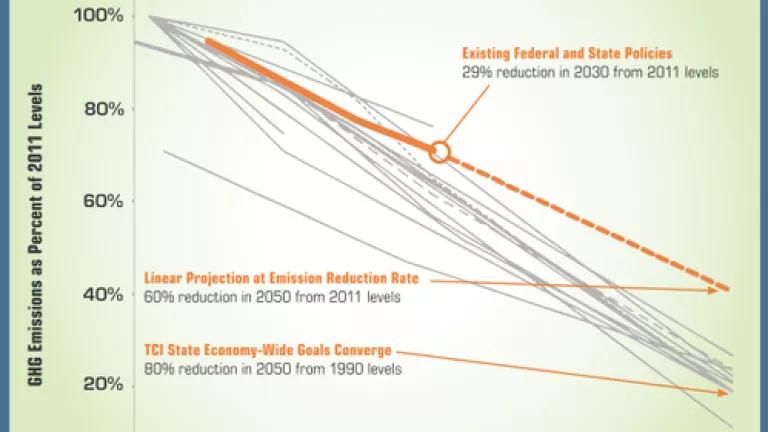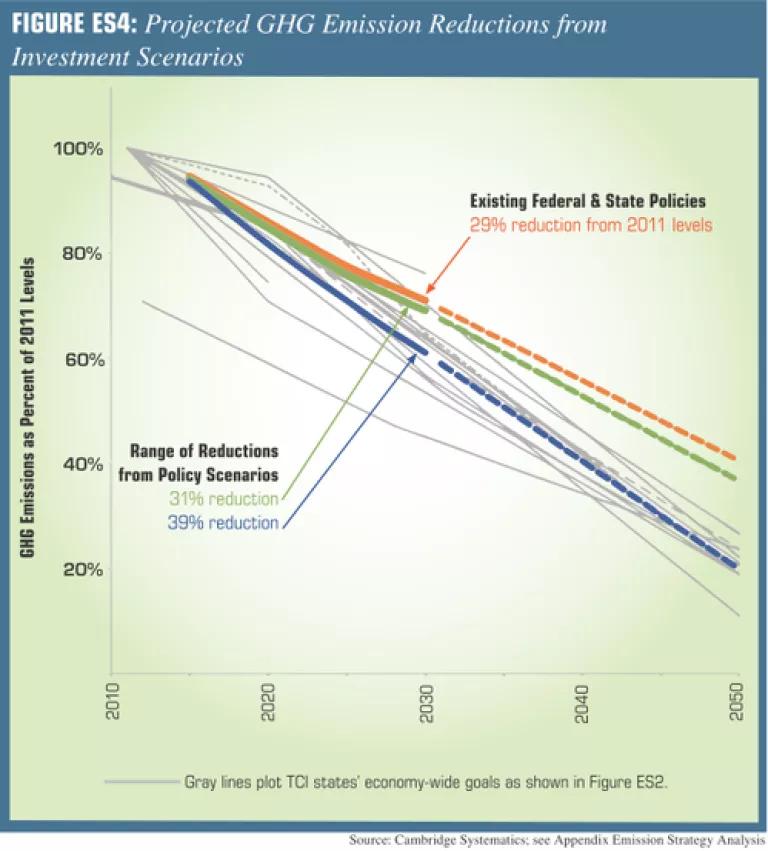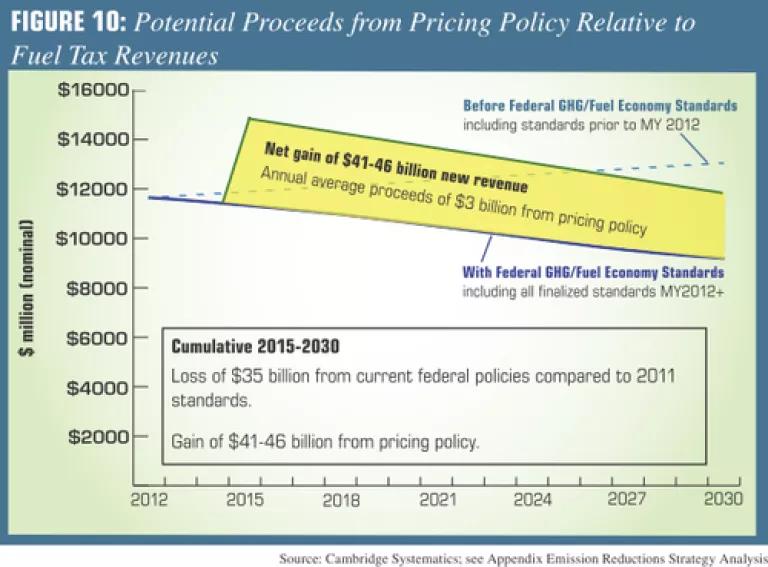Moving Forward: Eastern States Tackle Climate Change with Clean Transportation Investments

Launched in 2010, the Transportation Climate Initiative (TCI) brought 11 mid-Atlantic and Northeast states to the table to discuss means and ends for addressing heat-trapping pollution from the transportation sector. This is a novel project in several respects. First, it is connected with another historic multi-state climate change compact, the Regional Greenhouse Gas Initiative (RGGI), without which greenhouse gas pollution from power plants providing electricity for its 9 members would be 24 percent higher today. Second, it focusses on state transportation policy, which makes sense because transportation accounts for about 35 percent of greenhouse gas emissions in this region, higher than the national average. Last but not least, it is supported by a top-notch team of analysts and experts at the Georgetown Climate Center (GCC), and partnerships are often essential to the success of this kind of innovative project.
Six of the jurisdictions involved with these initiatives - Connecticut, Delaware, the District of Columbia, New York, Rhode Island and Vermont - just announced that they will work together to develop new policies to address pollution from cars, trucks, and other vehicles in the transportation system. This is impressive, especially on the eve of the Paris climate conference. It is also encouraging to see state leadership on this coast, after a series of leaps forward on low-carbon transportation investments on the west coast. And even better is the fact that their work can be based on solid analysis, thanks to a report unveiled today by GCC and Cambridge Systematics: Reducing Greenhouse Gas Emissions from Transportation - Opportunities in the Northeast and Mid-Atlantic.
The good news for these states, and for others, is that while Congress makes a hash out of the highway bill the Obama Administration is raising the bar for fuel-economy performance of our fleet of cars and trucks. This and other federal and state policies that require our fleet to get cleaner will achieve a 29 percent reduction in 2011 transportation emission levels according to the GCC and Cambridge team of analysts. That's impressive, but as the graph below shows it falls short of the goals the 11 TCI states have set for themselves based on what the science says is necessary to help stabilize the climate.
So that's the problem. How to fill that gap? The team examined various policy bundles, methodologically similar to the 2009 Moving Cooler report (executive summary pdf here) which based on advice from the states studied included investments in
- Electric Vehicle/Alternative Fuel Infrastructure and Incentives;
- Urban and Intercity Transit;
- Land Use/Smart Growth;
- Active Transportation;
- Travel Demand Management and Ecodriving (meaning efficient driver behavior such as smoother acceleration);
- System Operations/Efficiency; and
- Freight/Intermodal Infrastructure/Operations.
Where does the money come from? Transportation system use pricing tools such as fuel taxes or road-user fees (i.e., tolls) might be used, helping reduce traffic while also generating revenue for new investments. An additional analysis includes investments in highway preservation and transit operations which should interest cities and states as well. The upshot? Modest and aggressive investment scenarios (neither of which goes as far as the maximum deployment scenario in Moving Cooler) bend the emissions curve so it's much more aligned with states' goals as you can see in the graph below.

And there are multiple benefits, beyond pollution reduction. I urge you to check out the report for descriptions of several of these, including benefits to businesses and regional economies. One that jumps out as interesting to us consumers is the bucks we'd save. Net savings due to fewer trips to the gas pump, to the auto repair shop as well as the incentives and discounts for switching to electric vehicles or other cleaner transportation options are huge - about $5.84 to $18.56 BILLION added up from 2015-2030. Cars are costly (and often a pain) to own and operate, and these investments would ease that burden on us drivers.
State transportation agencies should be happy with this plan too. The analysts examined the shortfall in revenue due to reduced fuel consumption in our increasingly efficiency car and truck fleet, and found it adds up to $35 billion between now and 2030. Helping transportation agencies trump the shortfall in revenue translates into real benefits such as better commuter rail service and fewer potholes in our highways and roads. The policy bundles would fill that gap and then some, as the graph below shows.

These states are leading the way to delivering the cleaner, more efficient transportation choices we deserve. Now that's something to be thankful for this week!
